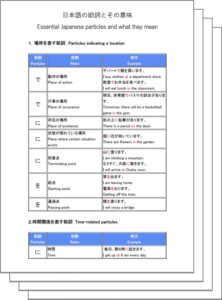Thank you very much for studying with us so far. This is the end of the e-Learning course. I hope you enjoyed it.
If you are satisfied with this course, please support us by posting a brief review below. A bonus lesson material is “Essential Japanese particles and what they mean”.
You can receive a special bonus lessons. To receive them, please email us (learning@hh-japaneeds.com) after posting your review.

Enrich your life
人生を豊かにする
We hope you can gain so much more than just learning Japanese. Studying Japanese is not just about improving your language skills. It’s also about enriching your life.
最後に、さようならを言いたいと思います。
See you again when the next series are ready.
次のシリーズが出来上がったら、またお会いしましょう。

When is “Yama no Hi(山の日 Mountain Day)”? What is its meaning?
Does your country have a national holiday called “Yama no Hi(Mountain Day)”? In Japan, an island country with many mountains,

Basic Japanese Grammar -基本的な日本語文法 –
Japanese grammar is very simple and straightforward. In Japanese, particles are used to mark different parts of a sentence. Particles

How to marry a Japanese woman
Japanese women are very popular overseas. Many men may be captivated by their calm and gentle atmosphere and beautiful black

Types of cashless systems available in Japan
As of 2022, you have cashless systems in many countries around the world. This system is very convenient because it






